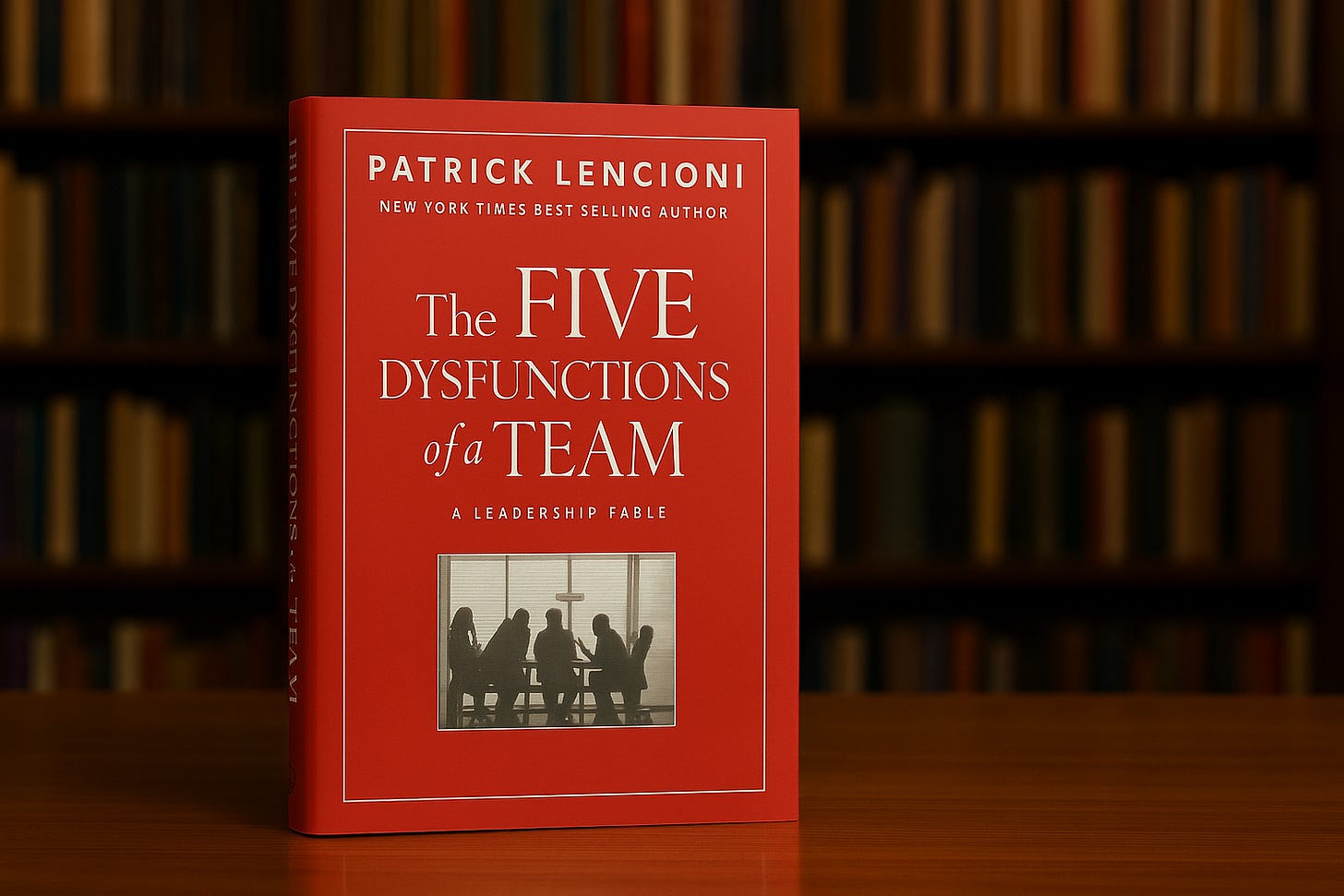The five dysfunctions of a team
Behind every failed strategy is a team that couldn’t talk.
The book in three sentences
Great teams aren’t built on talent alone — they’re built on trust, conflict, commitment, accountability, and results.
Most teams fail not because they lack strategy, but because they lack the courage to be honest.
One dysfunction leads to the next, creating a compounding failure spiral.
Why I Picked It Up
I got this recommendation from a friend who was leading a software engineering department through a tense org restructuring. The book reveals a leadership parable told through the story of a fictional tech company that reminds me of The Goal.
I listened to the audiobook, and here are three things that stayed with me:
Trust is the Foundation
Conflict is Productive
Commitment to Results
As I reflect on my notes and start mapping the learnings, I couldn’t help but draw parallels with the Amazon Leadership Principles.
Trust is the Foundation
Lencioni begins his story with the team’s offsite, where the cracks are subtle but real. The CEO notices people play it safe, avoid personal disclosures, rarely admit when they’re unsure, and the absence of vulnerability-based trust, the kind that lets someone say:
I messed that up — I need help.
I've experienced a similar counterproductive environment as described in the book, where more time was spent documenting decisions and taking screenshots of who said what on Slack, because "being protected" is almost more important than making progress. If vulnerability is not welcomed, teams stay in protection mode.
The story portrays how even the most senior executives in the fable carry a status armor, which kills open dialogue. Building trust means being vulnerable and genuine first.
Conflict is Productive
As trust builds up, productive conflict can emerge — the second dysfunction.
In the early meetings, team members nod along, hold back critiques, and defer to consensus. The danger? Artificial harmony.
Lencioni contrasts this with healthy disagreement: interrupting not to derail, but to challenge and engage. In one moment from the story, a key exec finally voices disagreement about a hiring decision. It sparks tension — but also a breakthrough. People finally start speaking their minds.
This idea reminds me of Amazon's leadership principle “Have a backbone,” because Teams that don’t disagree and commit, don’t grow.
Commitment to Results
In Lencioni’s model, the fifth dysfunction is inattention to results. This aligns with Amazon’s principle of “Deliver Results”. It’s not enough for teams to trust each other and engage in healthy conflict if they aren’t collectively focused on outcomes. The fictional team in the book only starts succeeding when everyone shifts from individual agendas to a shared commitment to results.
A Note from Me
The five dysfunctions of a team:
Absence of Trust – people don’t open up or admit mistakes.
Fear of Conflict – real issues get buried under politeness.
Lack of Commitment – vague alignment leads to scattered execution.
Avoidance of Accountability – no one calls out underperformance.
Inattention to Results – ego or personal goals take priority over team wins.
I came back to this framework during a reorg when team roles were shifting, and trust was shaky. It helped me zoom out and ask: Where are we stuck? It wasn’t about velocity or OKRs — it was about people not feeling safe enough to disagree out loud.
I started by acting on what was under my control, making small trust deposits: owning my own mistakes early in meetings, being transparent about uncertainty, and surfacing silent resistance in 1:1s. Over time, it gave others an opening to do the same. That’s when the real progress started.
If your team feels off but you can’t quite name it — this book gives you the vocabulary and the mirror.
What to Read Next
Check the summary for The Mom Test, the most recommended Product book.
You look at where you’re going and where you are, and it never makes sense, but then you look back at where you’ve been, and a pattern seems to emerge.




